Baby Puree Recipes
Your baby will love these homemade baby purée recipes, simple single-ingredient purees suitable as first foods. Plus seven nutritious stage two baby food combinations you can create with the stage one purées.
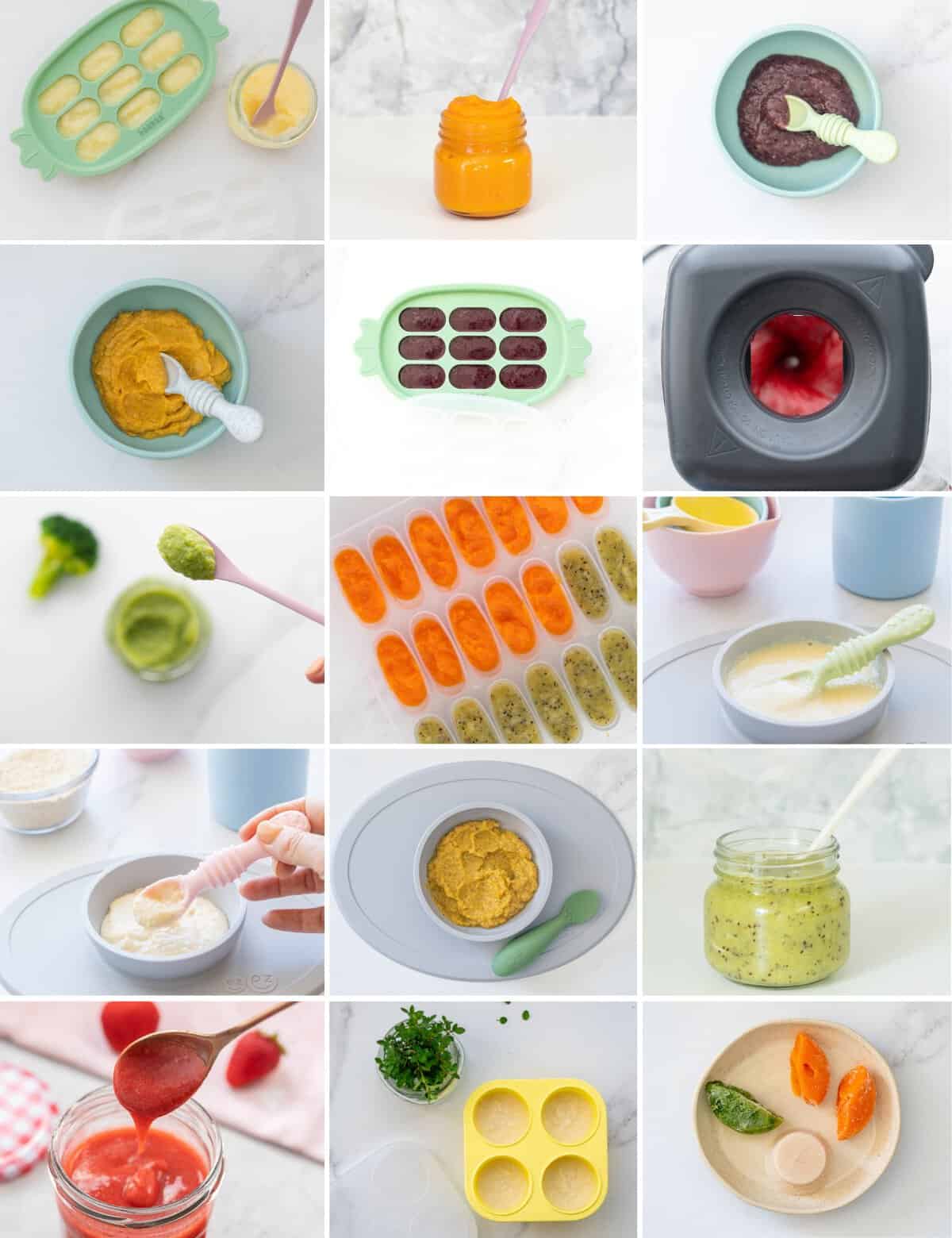
Baby Purees vs Baby-Led Weaning
There are two main approaches to introducing babies to complementary foods;
- Traditional Spoon Feeding
- Baby Led Weaning
Although they can look very different in the first few weeks and months of starting solids they ultimately both have the same goal to start your baby on solid food at around six months and have them consuming a nutritious family diet by twelve months of age.
We should also always be aware that first foods are going to look very different in different countries and within different cultures.
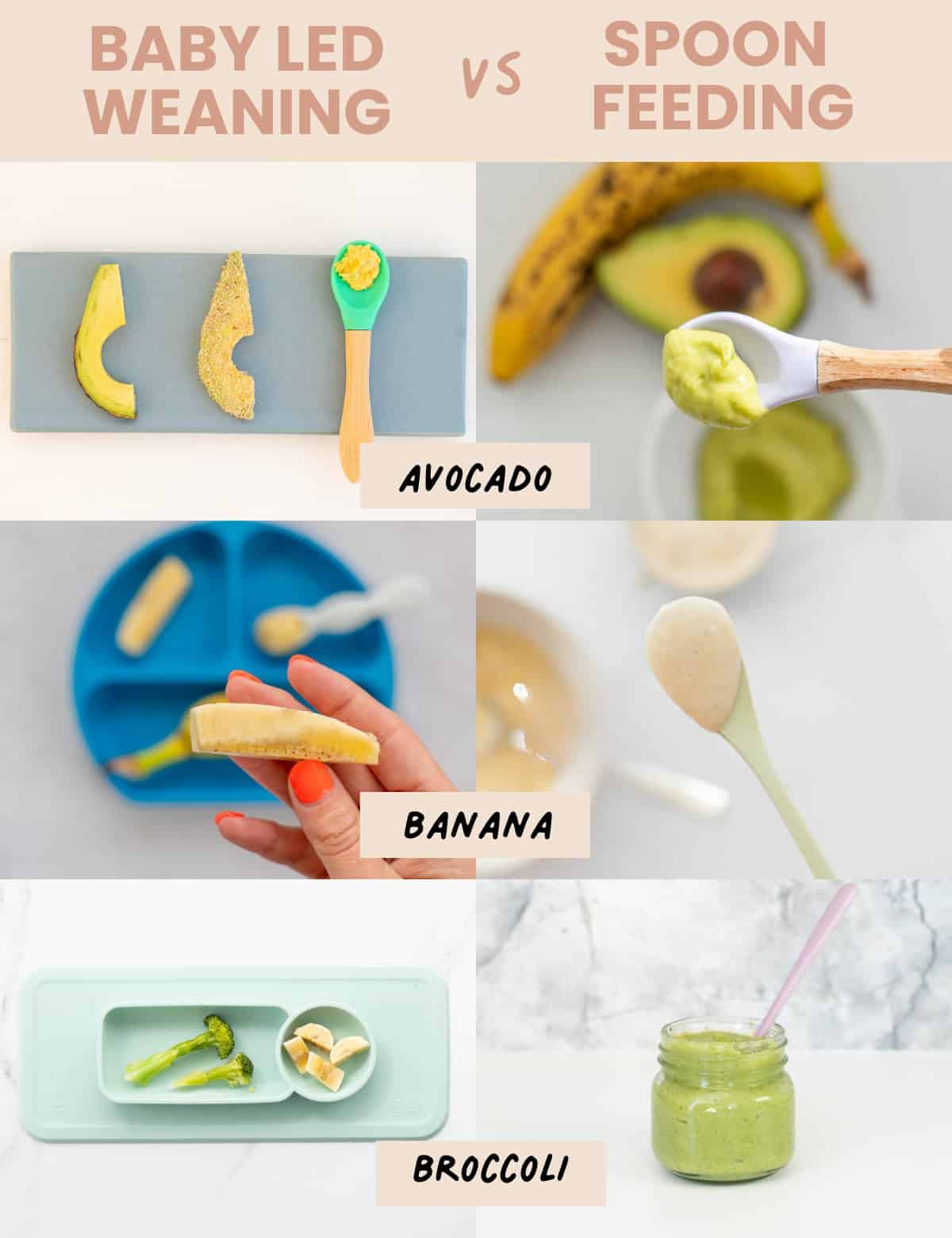
Making sense of baby food stages
Complementary feeding aims to transition a baby from an exclusively milk diet (breast milk or infant formula) to eating the same foods as the rest of the family. It is all about increasing food texture and moving forward.
Guidelines for introducing complementary foods to a baby vary a little from country to country but essentially they do all have the same goal of transitioning a baby from a milk diet to family food in a safe way.
I live in New Zealand and have worked as a Dietitian in both Australia and New Zealand so I use the Healthy Eating Guidelines for NZ Babies and Toddlers as my guide. You should always check with your healthcare professional and your country's guidelines.
The ANZ Guidelines state that babies should be introduced to solids 'around six months of age, when your baby is showing signs of readiness, introduce complementary foods'.
'Start with spoon-fed purées, then progress over the next few weeks to mashed/
lumpy foods and soft finger foods.'
It should be noted that prolonged use of puréed foods and delaying the introduction of lumpy textures beyond the age of nine months is associated with feeding difficulties in older children and a lower intake of nutritious foods, such as vegetables and fruit (Fewtrell et al 2017).
Stage One Puree Food
- Thin consistency
- Babies that start complementary foods before six months of age should start with a liquid purée
Stage 1 Baby Puree Recipes
- Apple puree
- Avocado baby food
- Baby custard
- Baby hummus
- Baby Porridge
- Banana baby food
- Blueberry puree
- Broccoli Puree
- Butternut squash puree
- Carrot puree
- Chicken baby food
- Kiwi puree
- Pear puree
- Quinoa baby cereal
- Raspberry puree (made without additional sweeteners)
- Strawberry puree (made without additional sweeteners)
- Sweet potato baby food
- Zucchini puree
Stage Two Puree Food
- Thicker purees
- Combination purees that may include, fruits, vegetables, proteins, dairy and grains. See below for seven nutritious stage two baby puree recipes.
Stage Three Puree Food
- Combination baby foods with a mashed texture, and soft lumps of food.
- By seven months of age, babies will generally have moved on from puréed foods to having mashed/lumpy foods
Stage Four Finger Food
- Soft foods that can be picked up in whole pieces by little hands, but are soft enough to be finger-squishable.
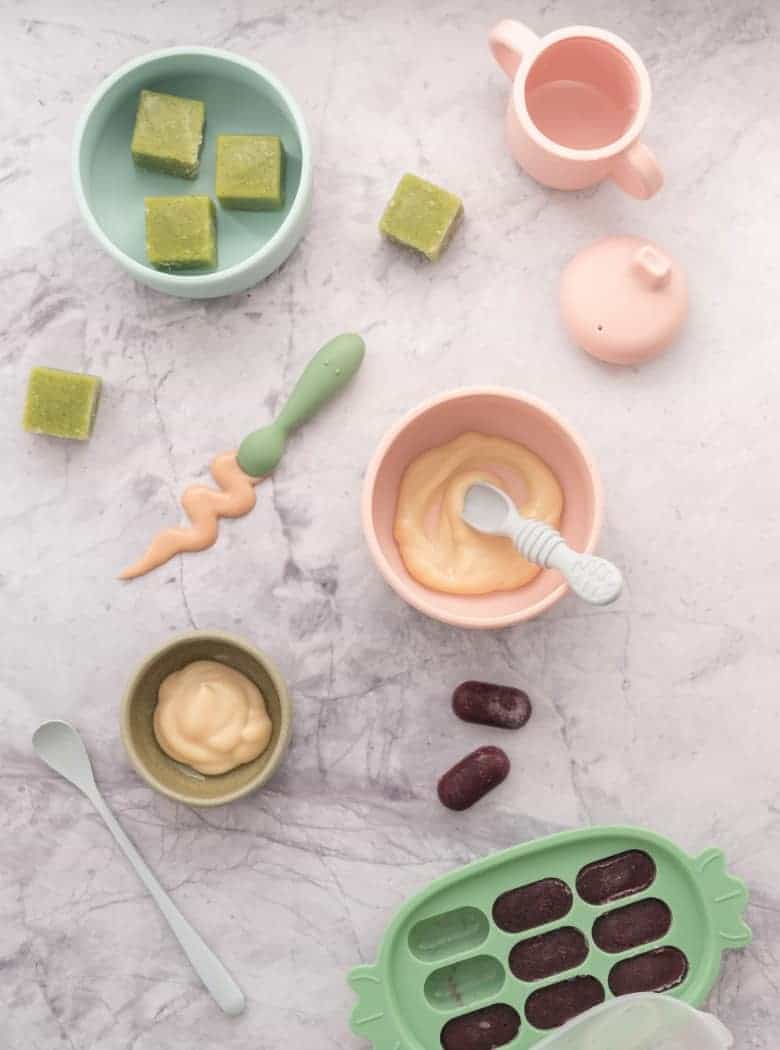
What about Baby-led weaning?
Baby-led weaning is an approach to introducing complementary foods, where first foods are provided as soft finger foods rather than purée. Babies feed themselves, picking up the food by themselves instead of being spoonfed by someone else. There is also a philosophy of the baby sharing from family meals, enjoying the foods that are appropriate from the family table.
Baby-led weaning is very popular in some countries and is the preferred way to start solids by many parents.
In New Zealand, Te Whatu Ora (Our Ministry of Health) does not currently recommend baby-led weaning they are seeking more research to establish if it is a developmentally and nutritionally safe practice.
Save This Recipe!
However, they are aware some NZ parents are choosing to commence solids using baby-led weaning and suggest the following to ensure they do so safely.
- The baby should be able to sit unassisted, pick up food and bring it to their mouth.
- Foods offered in the first month or two of complementary feeding should be soft
and able to be squashed on the roof of the mouth with the tongue. - Follow the advice to reduce the risk of choking
- Offer iron-rich foods daily
Here is a list of Baby Led Weaning Starter Foods to try.

Equipment for making homemade baby food recipes
Stove top method
- Element
- Pot/saucepan
- Steamer basket (optional)
Microwave method
- Microwave proof dish
- Paper kitchen towel
Blending equipment
- Blender
- Food Processor
- Stick blender or emulsion blender
- Food mill or Mouli
- Spoon and sieve
- Fork
Storage
- Reusable zip lock bags
- Air-tight storage containers
- Baby food trays or ice cube trays
- Glass jars
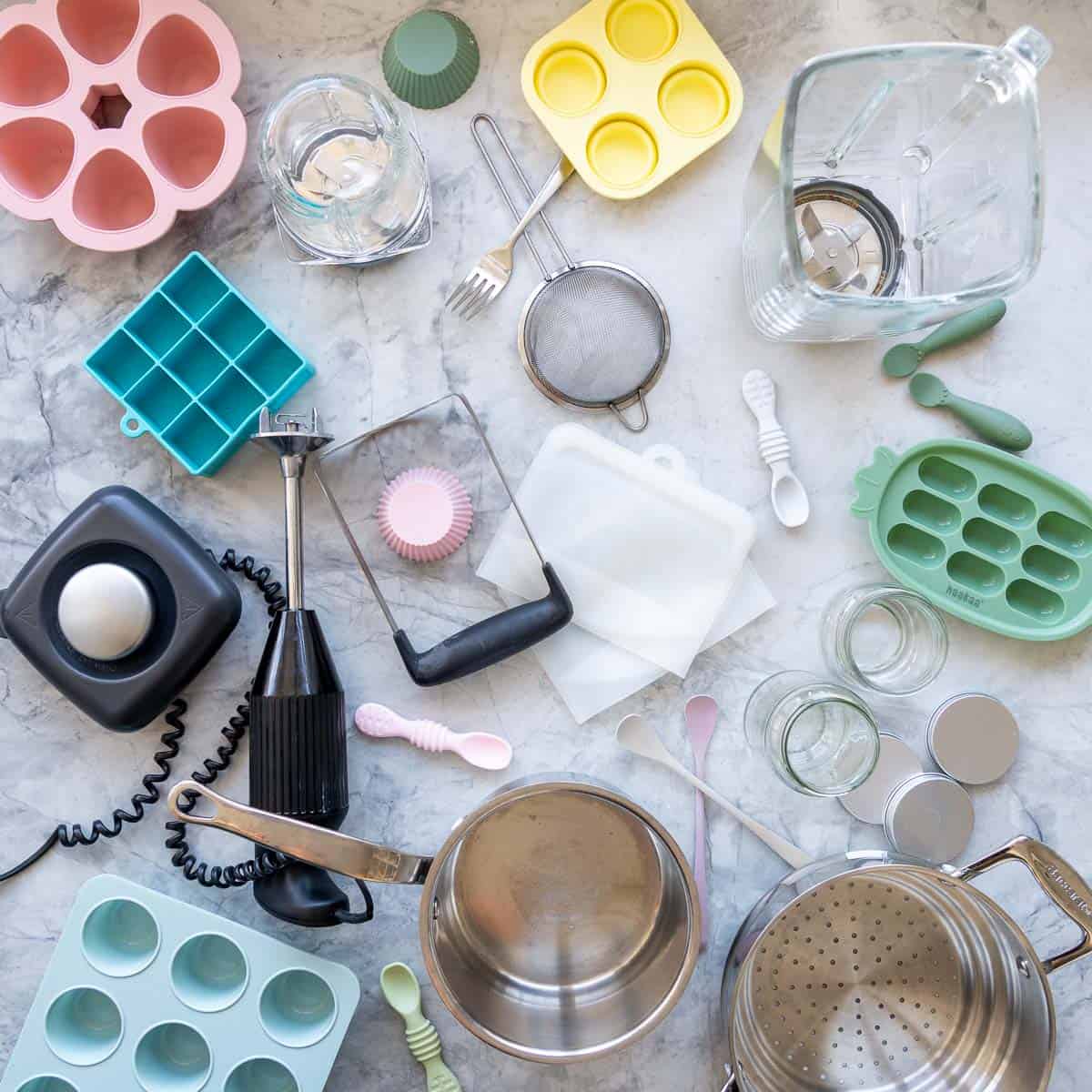
Storing baby food
- Most freshly made baby foods can be stored in a covered container in the fridge for up to 3 days.
- Freeze any extra purée in ice cube trays or baby food trays for easy-to-use portions. Once frozen, transfer them to clean freezer bags or airtight containers. Best practice is to label the frozen baby food with the date.
- Frozen baby food can be stored in the freezer for up to six months.
- When you are going to use pre-frozen portions only take out of the freezer enough food to feed a baby for one meal.
- Thaw baby foods in a covered container in the refrigerator. Alternatively, you can also take frozen food out of the freezer and defrost it in the microwave. The thing to avoid is defrosting your frozen baby food on the bench top.
- Use food as soon as it is thawed. Once thawed, it shouldn't be re-frozen.
- Throw out any uneaten food after a meal and don't leave food at room temperature for more than 2 hours.
- Throw out any food the baby has not eaten at the end of the meal.
- Also throw out any food that has been sitting at room temperature for more than 2 hours.
Stage two baby food combinations
Below are illustrated step-by-step instructions to combine my stage one baby puree recipes to make stage two baby purees.
Chicken + Sweet Potato + Zucchini
Combine homemade chicken baby food, sweet potato puree and zucchini puree to create a baby food that is a good source of many nutrients including Protein, vitamin A, Vitamin C, Niacin and Selenium.
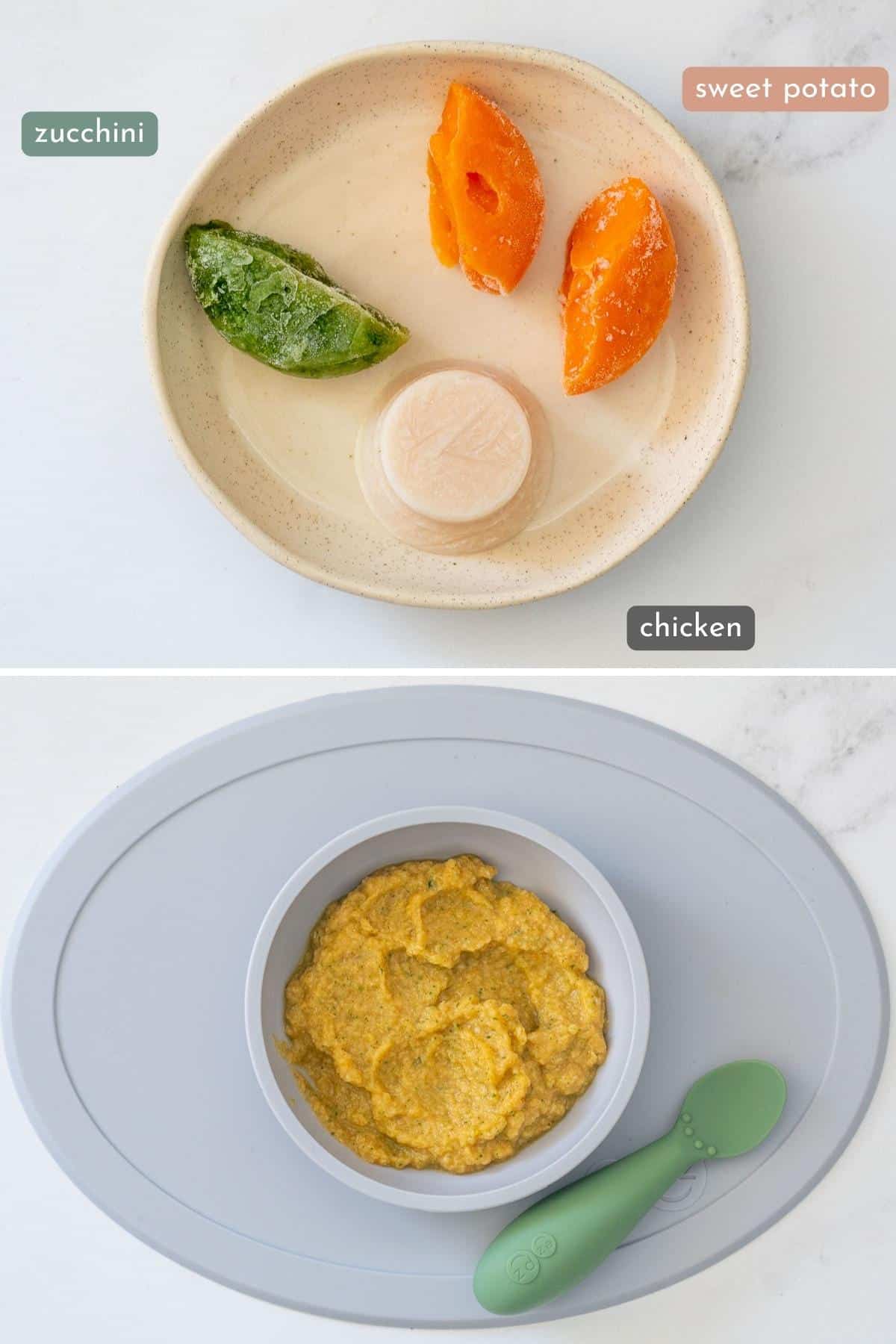
Apple + Broccoli + Butternut Squash
Combine apple puree, broccoli puree and butternut puree to create a homemade baby food that is naturally sweet and nutritious providing vitamin A, vitamin C, Vitamin E and fiber.
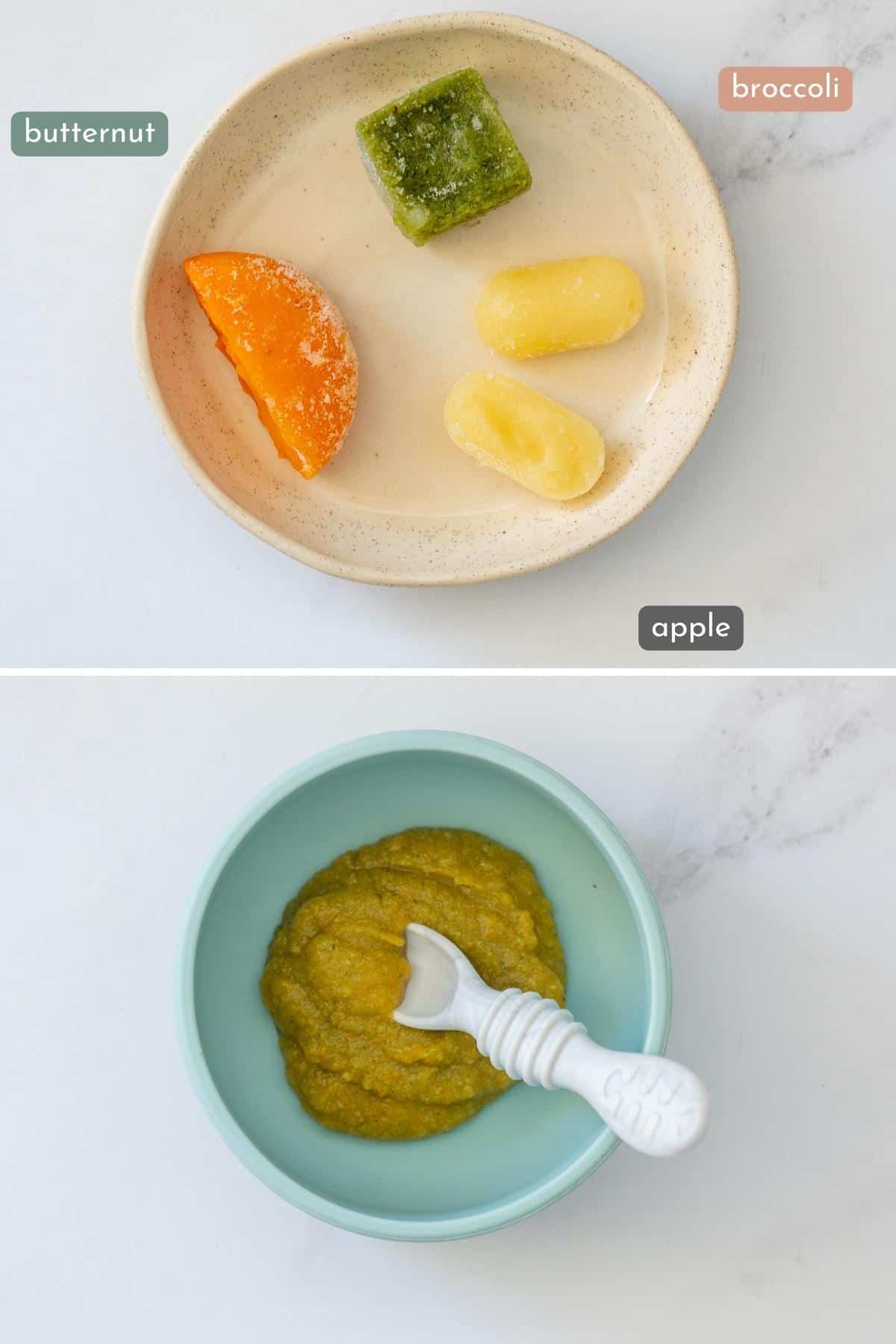
Pear + Blueberry
Combine pear puree + blueberry puree to create a taste sensation that may help with constipation in babies.
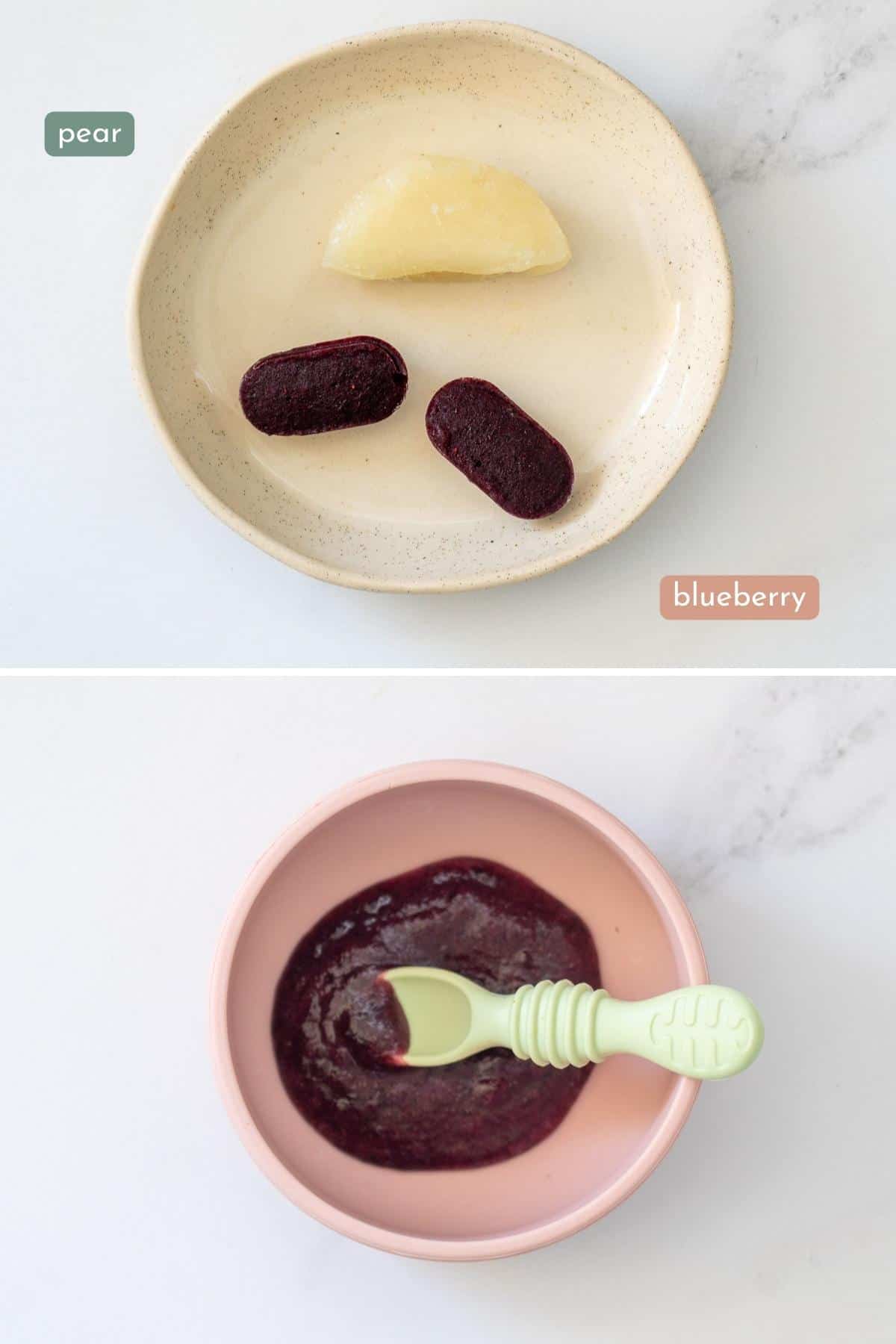
Chicken + Avocado + Carrot
Combine chicken puree with carrot puree and avocado baby food to create a creamy homemade baby food that provides protein, vitamin A, Vitamin E, Folate, and unsaturated fats.
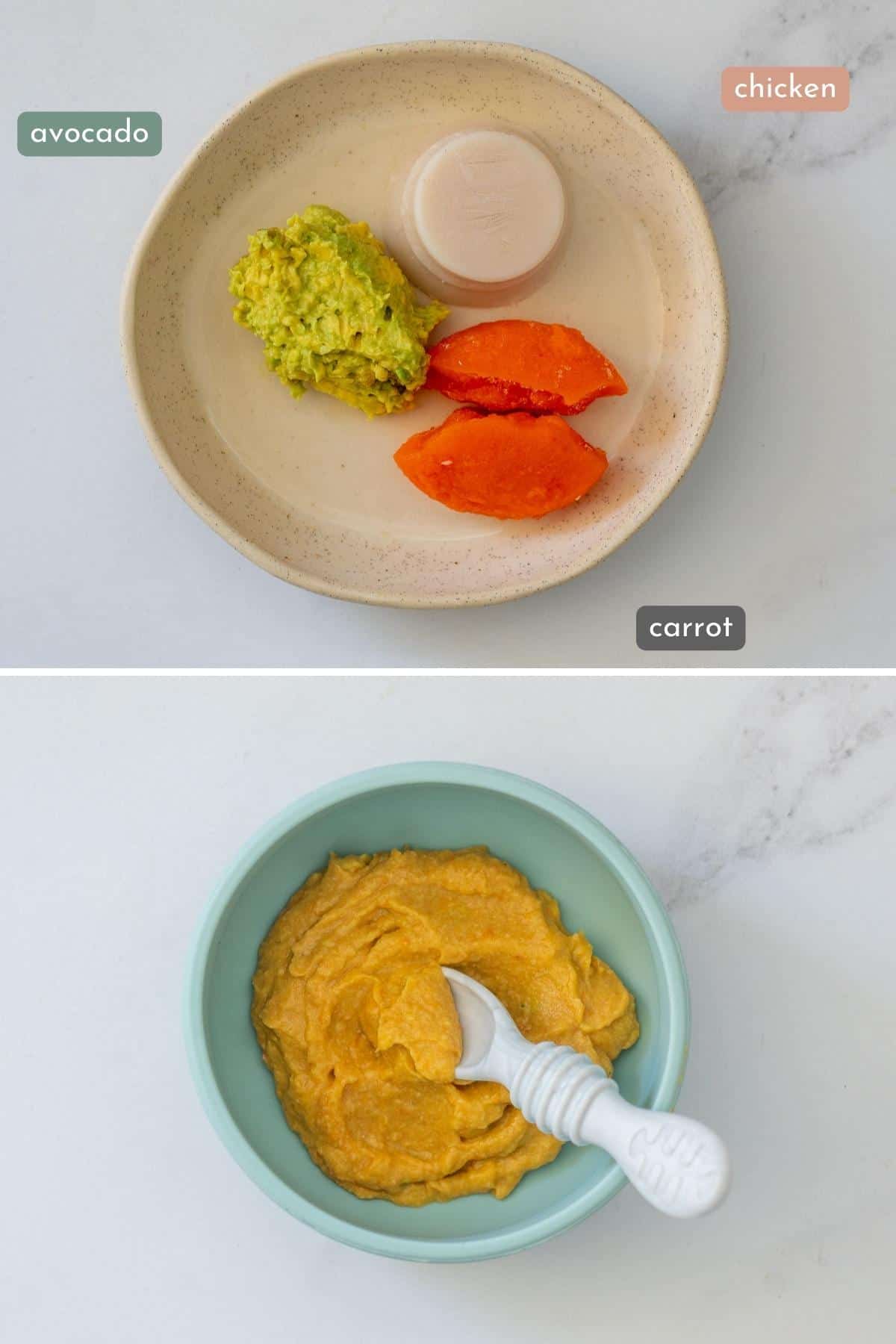
Kiwi + Apple + Yoghurt
Combine kiwi puree, homemade applesauce and yogurt to create a lovely combination rich in calcium, protein, folate and vitamin c.
You can find information on the best yogurt for babies on my site as well.
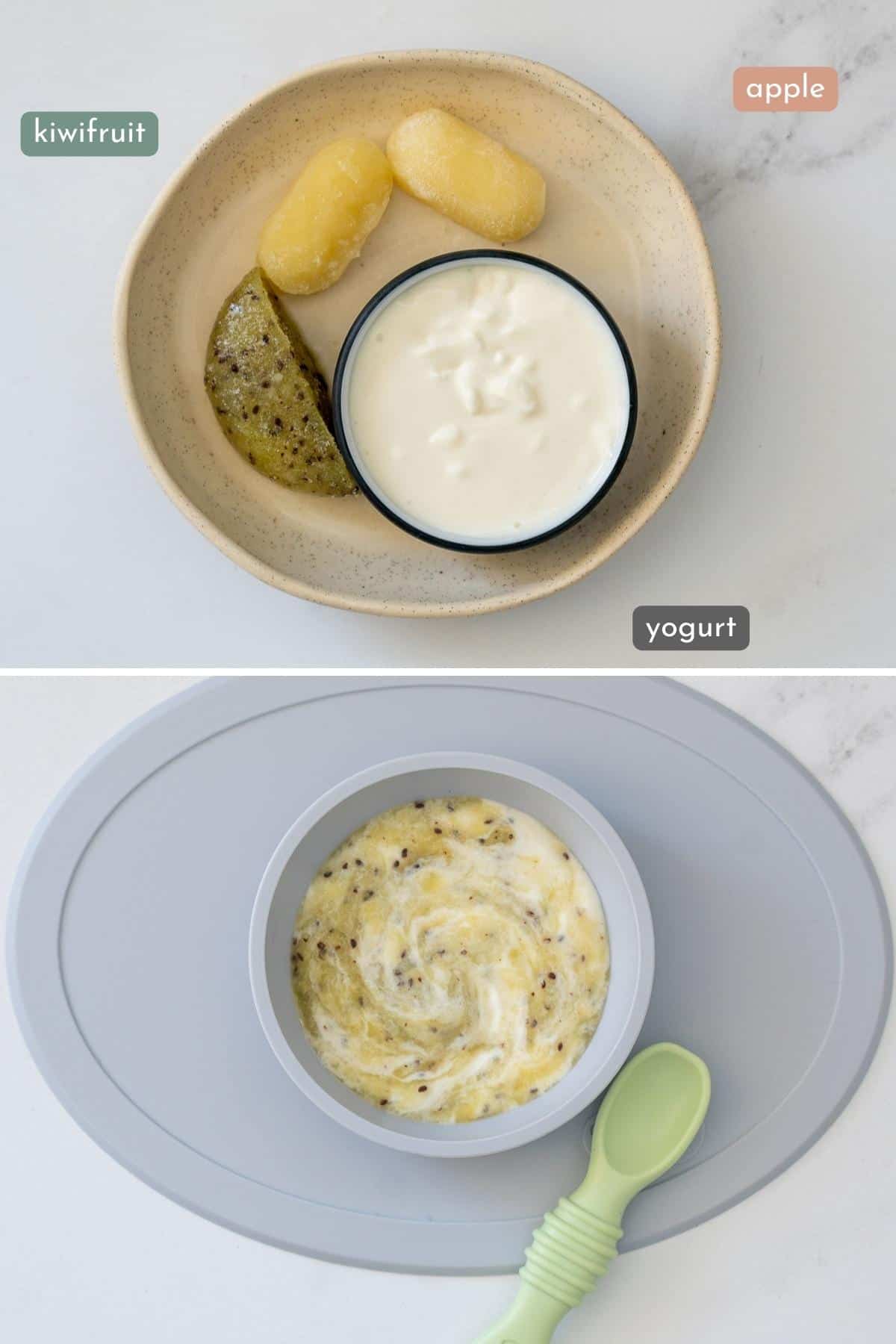
Banana + Blueberry + Apple
Combine banana puree, blueberry puree and apple puree for a lovely fruity taste sensation.
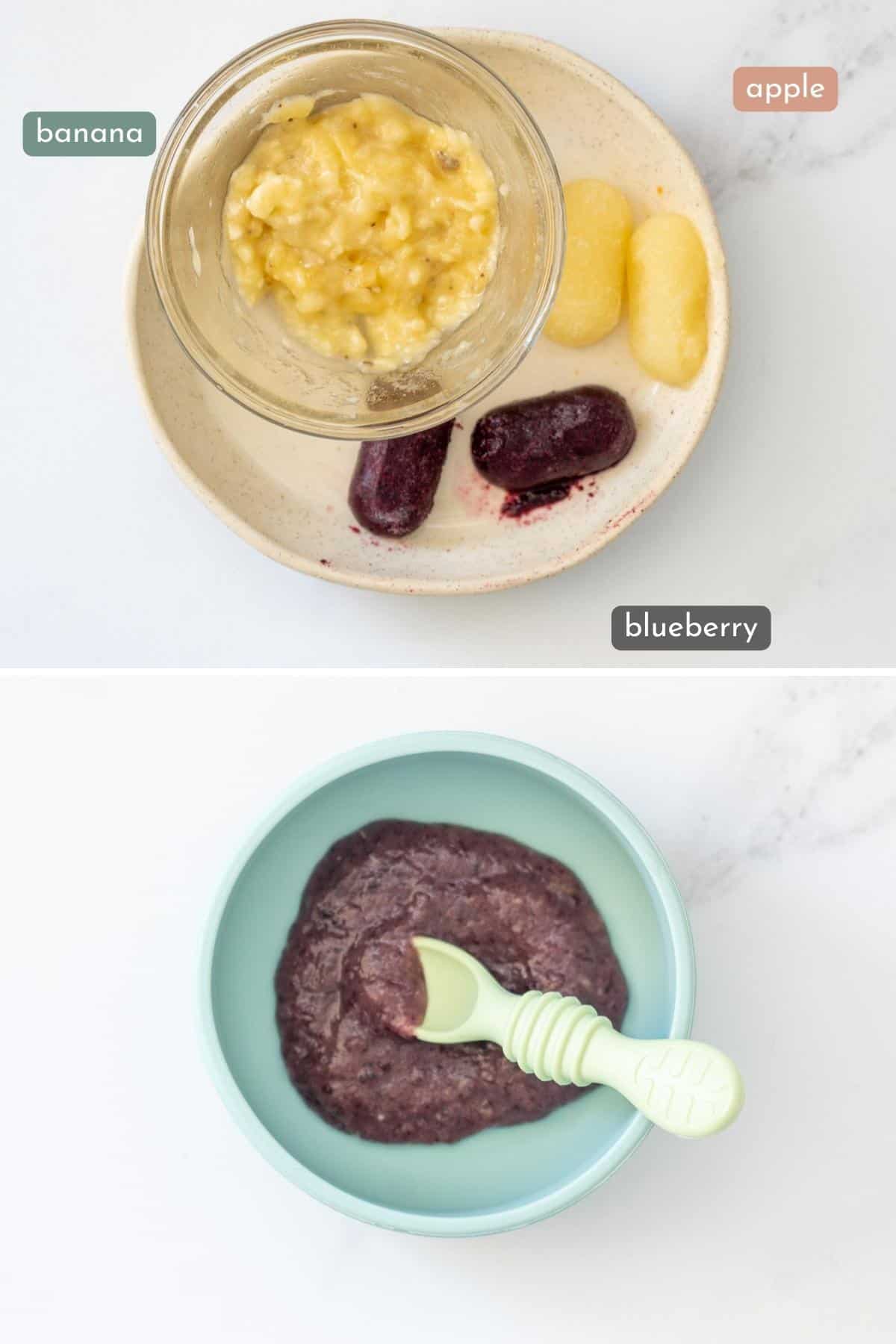
Pumpkin + Carrot + Hummus
Combine pumpkin puree, carrot puree and homemade hummus to create a plant-based homemade baby food.
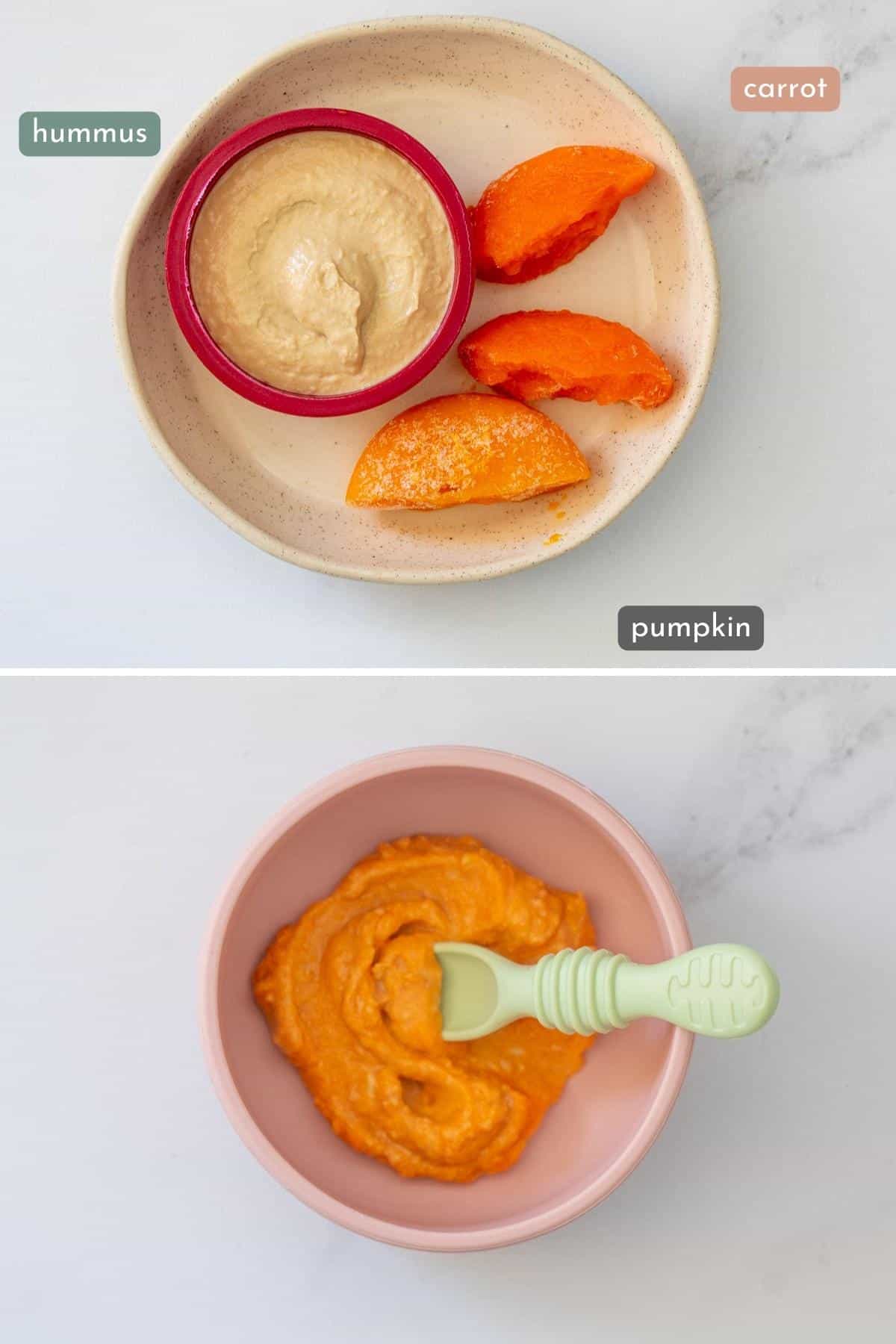
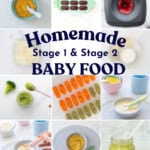
Quick Start Guide To BLW
Baby led weaning doesn’t need to be complicated, grab my quick start guide to begin your little ones food journey.